Some dogs love meeting other dogs and radiate joy when given the chance to interact with their own kind. But is it a good idea to allow dogs to “make friends” while leashed?
We’ll dive into the issue and explain everything you need to know below.
Key Takeaways: Are On-Leash Dog Greetings a Good Idea?
- Generally speaking, trainers and behaviorists discourage owners from allowing on-leash greetings. Doing so usually puts dogs in uncomfortable situations in which they feel tense.
- Instead, allow dogs to meet each other off-leash, in safe, controlled environments. You’ll generally want to keep the dogs moving and offer other types of mental stimulation while doing so to prevent them from becoming too focused on each other.
- Bear in mind that dogs don’t necessarily need to meet other dogs to remain happy. In fact, some dogs simply aren’t cut out for living super social lives — they may need to stick to two-footed friends.
Should You Let Your Dog Meet Other Dogs While Leashed?
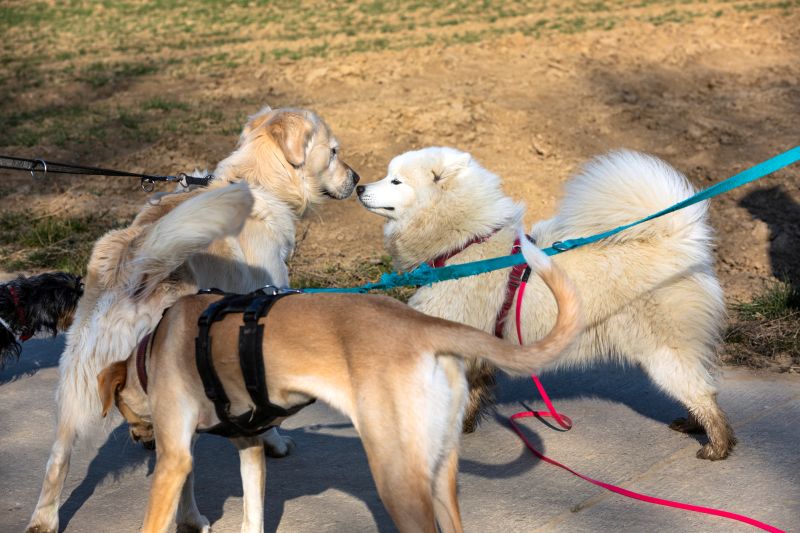
Generally, dog trainers and behavior consultants cringe at the idea of leashed greetings between dogs.
Leashed dogs have a limited set of options for greetings, making it much more likely that things can go wrong.
Let’s explore why it’s usually a bad idea to let your dog meet other dogs while leashed:
- You can get hurt. If the dogs get super excited and try to play or get into a scrap, it’s easy to get tangled up and fall. A tangled leash can also easily break hands or cut into fingers.
- The other dog might not be into it. Even many social, savvy, and civil dogs don’t enjoy on-leash greetings because they feel trapped, due to being attached to the leash. Older dogs and injured dogs might be social but wouldn’t want to greet your hypersocial golden retriever puppy without an escape route. With limited ability to move around and communicate, they may feel scared or defensive. Beyond that, fearful and aggressive dogs also need walks. Many of my clients have dogs that cannot safely meet other dogs in most situations, but their dogs still need walks. Letting your dog greet these dogs could easily result in a fight or training setbacks.
- The other owner might be distracted or in a rush. I can’t tell you how many times I’ve been talking to my mom on the phone or hurrying home from a walk that went a bit too long, when someone lets their dog rush up to my dogs for a leashed greeting. Even if the dogs want to hang out, sometimes folks don’t have time or energy for an on-leash greeting.
- The other dog might be in training. A critical part of many dog training plans for everything from leash manners to leash reactivity is to avoid on-leash greetings. Letting your dog approach these dogs can set back someone else’s training by weeks.
- It teaches your dog not to ignore other dogs on walks. If your dog thinks that dog walks are social events where he can drag you over to every other leashed dog for a quick romp, it can be extremely difficult to teach him to walk nicely with you when you need him to. Generally I find it’s easiest to avoid on-leashed greetings at all times for clarity, rather than trying to teach your dog to ignore dogs sometimes but greet them other times.
- You might misread your own dog’s intentions. If your dog is straining at the end of his leash towards another dog, you might assume that he desperately wants to go say “hi.” He might – but he might also be so over-aroused that he will be rude, pushy, or scary to the other dog. My younger dog Niffler has these tendencies: He’s so excited about other dogs that he beelines for their ribcage and sometimes leaps over them (or into them). Obviously, that’s quite rude and can result in injury or squabbles. He isn’t allowed to greet other dogs on leash for that reason, among the others listed above.
- Fights can break out. When friendly dogs feel trapped by the leash or don’t want to greet other dogs at all, it’s easy for fights to break out. Dogs might snap if they trip over their own leashes, at the moment that an owner puts pressure on their leash, or simply because they never wanted to socialize at all.
- The other dog might be unvaccinated or unhealthy. Nose-to-nose greetings are a great way to share germs. The other dog might have kennel cough, an upper respiratory disease, or plenty of other yuckies!
Exceptions: When You Might Allow a Leashed Greeting Between Dogs
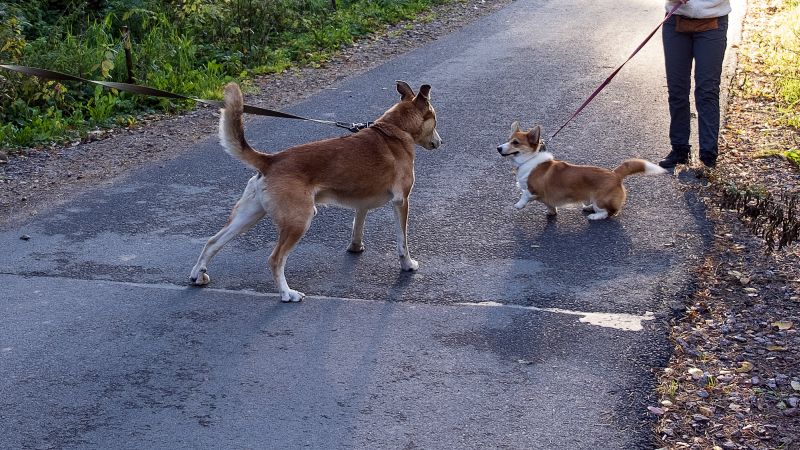
Of course, there are exceptions to almost any rule. There are a few main situations in which I still conduct or allow on-leash greetings between dogs:
- It’s about to happen anyway. Have you ever had someone ask “Can they say hi?” as they’re already approaching you and their dog is about 6 inches from yours? If so, you’ve experienced this exception. It’s probably more stressful and upsetting for both dogs to be yanked away from that situation than it is to do your best to conduct a safe on-leash greeting. Take a deep breath, relax your body, and manage the situation calmly as described below.
- In a controlled training scenario for a dog that is unknown or unfriendly. Shelter workers and behavior consultants conduct careful on-leash greetings on a near-daily basis to aid in safety when introducing dogs that have an unknown social history or who need to greet other dogs in a controlled manner as part of their training plan. This is a lengthy and controlled process that is very different from letting Fido sniff Rover on the sidewalk. For an example of what this looks like, check out our video about parallel walks below.
How to Safely Conduct an On-Leash Greeting if Needed
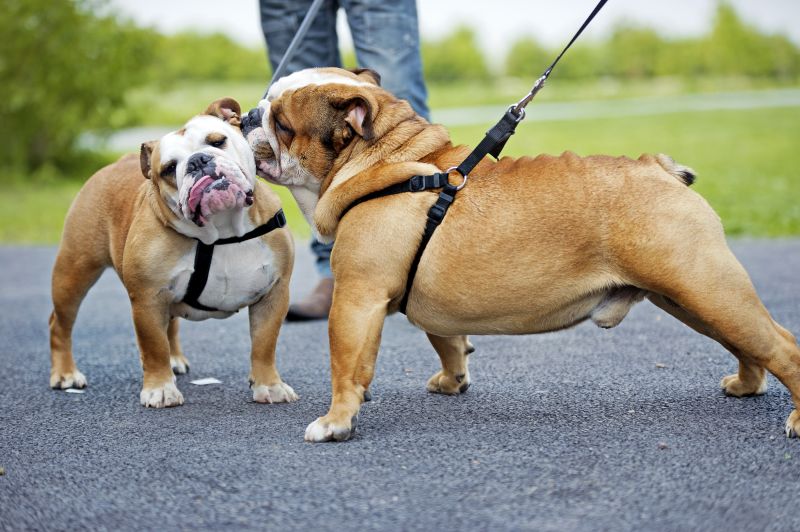
If you do need to allow a leashed greeting to happen, there are some things you can do to help keep everyone safe.
We’ll outline a few of the most important things to do below:
- Assess the situation. Do both dogs look friendly, relaxed, and interested in saying “hi?” (Double-check the body language section below.)
- Ask permission from afar. Don’t wait until the dogs are practically nose-to-nose before asking the other owner if a greeting is OK. Try asking, “Can they say hi?” rather than “Is he friendly?” Many owners will say yes if asked if their dogs are friendly, but that doesn’t necessarily mean that they want to stop for a greeting.
- Adjust your grip on the leash. Many of us walk with our wrists through the leash loop or with the leash wrapped several times around our hands. This can be dangerous during an on-leash greeting! Instead, loop the leash over your thumb so that it drapes into your palm, then close your four fingers around the leash. This is a strong grip that can easily be dropped if needed.
- Take an arced path to the meeting. As you approach the other dog, try to step to the side so that you and your dog are approaching toward the other dog’s shoulder, rather than head-on. This is more polite in “dog speak,” as it allows the dogs to sniff each other and see each other at the same time.
- Keep the leashes loose and untangled. Now it’s your job to stay out of the way. Generally, you’ll want to lift the leashes, managing the slack with your other hand, so that the dogs can circle, play, or move apart without getting tangled. Leash pressure or tangles can easily turn play into a fight, so this is important. It takes practice, so try to use this technique as your dog is sniffing around bushes.
- Give the dogs space. While you don’t want to pull on the leashes, you also don’t want to crowd the dogs. Having two humans hover over their greetings can add a lot of pressure and stress to the dogs. Try to step back a bit and give the dogs plenty of space to move naturally.
- End the encounter if things are one-sided or tense. Just because you’ve started a greeting doesn’t mean you’ve got to keep the dogs together for minutes at a time! At even slight signs of tension or over-enthusiastic play from one dog, it’s best to separate them.
- Keep it brief and mobile. Try to call the dogs apart at natural break points in their greeting. If things are going well, try to keep walking together rather than standing around to let the dogs play in the same spot. Many minor scuffles can be avoided simply by not letting the dogs pester each other too much.
Dog-Dog Meetings: How It Normally Happens
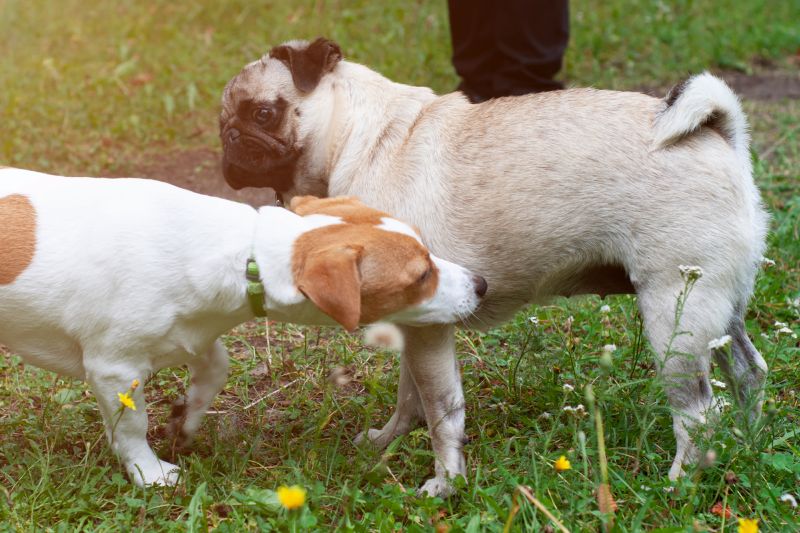
If you have the chance to observe free-ranging dogs, either street dogs or well-socialized dogs in large open spaces, you’ll notice that dogs don’t generally approach each other head-on at a steady pace.
Dogs generally pause at the sight of each other to take in information visually and through scent from dozens of feet away.
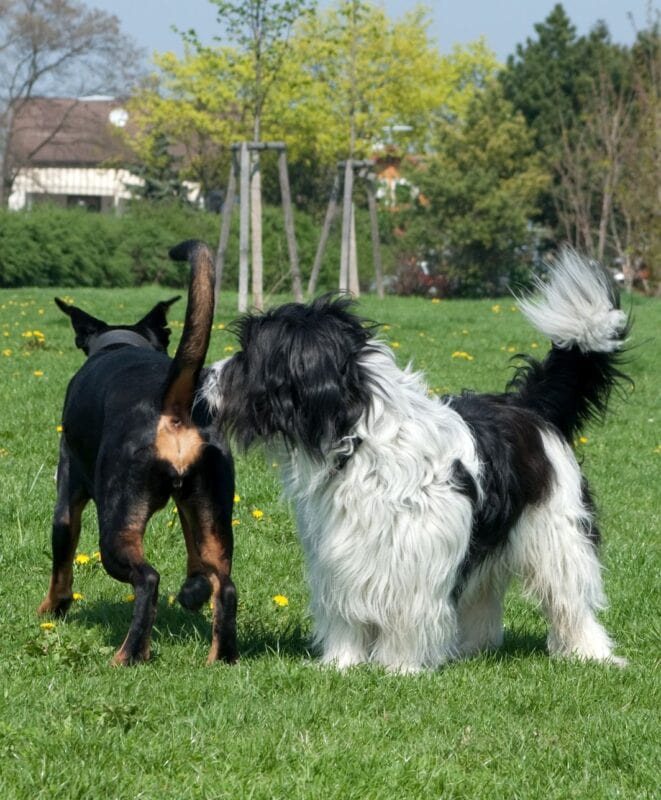
From there, they’ll signal their intentions with their tails and ears.
If both dogs continue to appear to be interested in greeting each other, they’ll move towards each other in an arc, occasionally pausing to reassess the situation.
Finally they’ll meet, sniffing each other’s rumps and inguinal areas. The dogs may then move apart, follow each other, initiate play, or – potentially – scuffle.
In fact, it’s quite common for free-ranging dogs to choose not to interact after an initial visual assessment.
The signals that lead to the dogs declining greetings can be subtle: turning a head away, lip-licking, paw-raising, a change in tail carriage. If one dog fails to read these signals or chooses to approach anyway, there’s often a fight.
In other words, “natural” dog greetings are pretty different from marching up to each other on a sidewalk, meeting nose-to-nose, and not having space to reassess or move away.
Leashes and sidewalks inhibit dog-dog meetings and can add a lot of pressure to a situation that can already be awkward or tense.
Alternatives to On-Leash Greetings: Introducing Dogs Safely
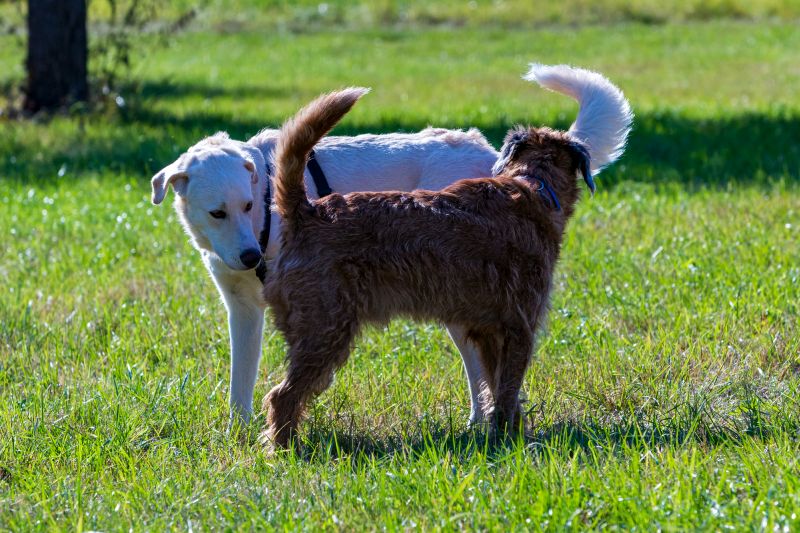
Generally it’s best to introduce dogs with a few key ingredients in place.
For starters, you need to ensure that both dogs are relatively social, civil, and savvy. If they’re not, consider getting the help of a trainer to assist in introductions.
Assuming you have that, you can start thinking about the place in which the greetings will take place.
Among other things, you’ll want to find a place that is large and open to give you and the dogs plenty of freedom to move. However, you don’t want the space to be completely empty – it should have plenty of three-dimensional complexity, visual barriers, scents to sniff, and other items to help prevent the dogs from fixating on each other.
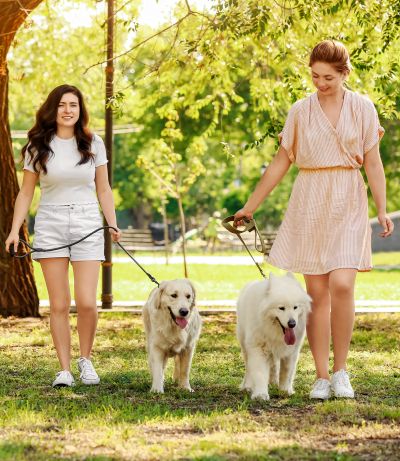
You’ll also want to keep moving – keeping up a steady pace and changing scenery can help the dogs focus on the environment and exploring.
When strange dogs have nothing to do but play with each other, it’s easy for them to find themselves stuck in a pattern of rough play that can tip over into a fight.
Locations like this can be hard to find in urban areas. Back yards can be tricky due to size or one dog feeling possessive of the area.
Dog parks often are devoid of enrichment and can be emotionally charged with dozens of uncontrolled dogs overrunning the area.
Check out SniffSpot for private dog-friendly areas for rent – you may have a hidden gem!
That said, larger urban parks, hiking areas, and even broad suburban streets can be used for careful dog introductions. If you have the luxury of a safe off-leash area and social dogs, your best bet is to just keep moving and monitor the dogs.
Otherwise, use long lines to create the feeling of off-leash freedom when it’s not safe or legal to have the dogs fully off-leash. I like leashes that are about 15 feet long.
For dogs that are relatively social, simply use a city park or wide street to casually and slowly let the dogs meet. Try to go at their pace without interfering, egging them on, or holding them back too much. It’s a delicate balance and can be tricky!
Follow the steps listed above for an on-leash greeting to help facilitate this.
And as you can see in our parallel walk video above, wide, quiet streets can be used for safe introductions with dogs that aren’t always friendly. In this case, start out with the dogs moving in the same direction on opposite sides of the street.
Over the course of 10 or more minutes, gradually close the distance between the dogs while continuing to move in the same direction. Eventually, if both dogs are amenable, you can facilitate an on-leash introduction as described above.
Above all else, try to stay out of it when your dog is greeting another canine. Your human manners are more likely to hurt than help if the dogs are social and have enough space.
Do Dogs Need to Befriend Other Dogs?
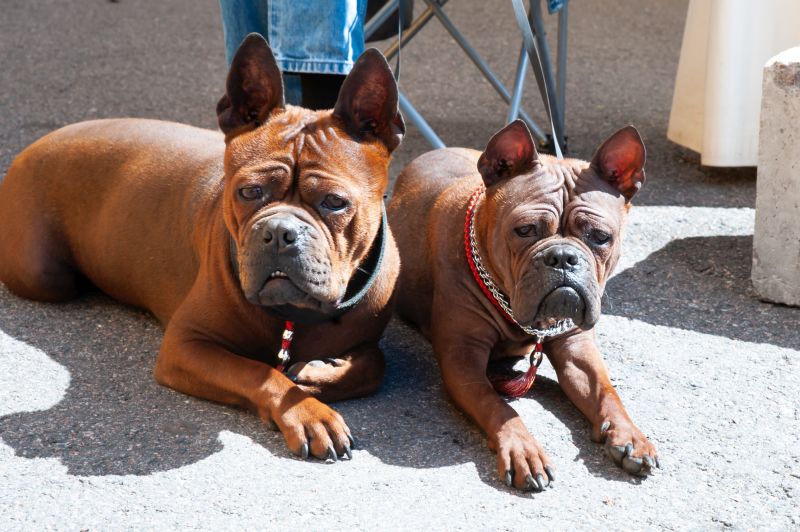
As a species, dogs are social. Dogs thrive with close emotional bonds, either with humans or their own species.
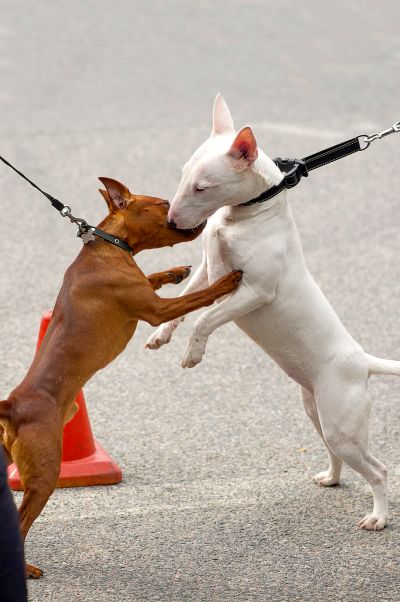
However, not all dogs have the genetics or social skills to be friendly with other dogs. Some breeds are notorious for same-sex or same-species aggression, while some dogs have had bad experiences.
Other dogs are undersocialized, and some dogs are just born a bit “off” socially.
It’s not unusual for owners to bring home a 2nd dog (usually a puppy) only to find that their current resident dog is none too thrilled about the idea of sharing his home.
Dogs are like people in many ways: They generally do best with friends that they know well. They won’t like everyone and meeting strangers can be a bit tiring.
Dogs play best with well-matched playmates that they know well enough to learn from each other.
In other words, most dogs really don’t need to meet a bunch of strange dogs. They will be more fulfilled and socially successful if you can curate a life for them with a rich social life of close friends.
Like humans, dogs also do best if they hang out with their friends while participating in an activity. Rather than standing in a park while your dog and his bestie run laps, try taking them both for a hike, to the beach, or even to a new neighborhood for a long walk.
Some breeds and ages of dogs love to wrestle, but generally parallel play and exploration are better for their friendship than constant WWE-style wrestling.
Safe Dog Introductions: Learn Dog Body Language
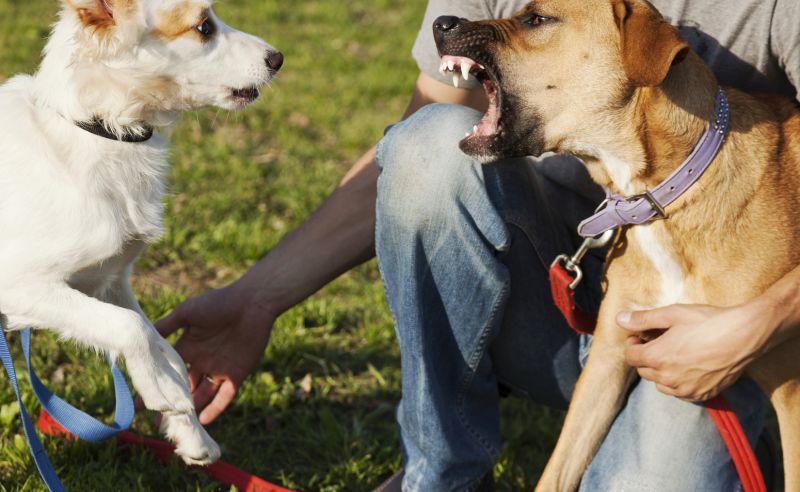
Dog-dog introductions involve a lot of subtle and fast-changing dog body language. Failure to read body signals as the handler (or as an undersocialized dog) is a recipe for tense, awkward, or even dangerous interactions.
Signs dogs don’t need to meet right now:
- Body weight shifted far back
- Body weight shifted up and forward into toes
- Tail tucked
- Tail held very high and stiff
- Lip-licking
- Turning away
- Barking
- Growling
- Showing teeth
- Ears pinned back
- Turning body away or avoiding eye contact
- Raising a paw
- Hopping, or straining towards each other
- Staring
- Stalking
Some breeds commonly exhibit some of the signs above, which are not necessarily cause for concerns.
For example, border collies often stare at other dogs. Stalking is also common among border collies, as well as huskies.
Signs dogs are ready to meet include:
- Relaxed, gentle, sweeping tail wags
- Fast, low tail wags
- Full-body tail wags
- Slightly open mouth in a “smiling” pant
- Moving towards each other without straining
- Soft eyes
- Relaxed ears that are neither pinned back or pricked forward
Remember: You want to see good signs from both dogs, not just one, to initiate a greeting.
On-Leash Dog Greetings: FAQ
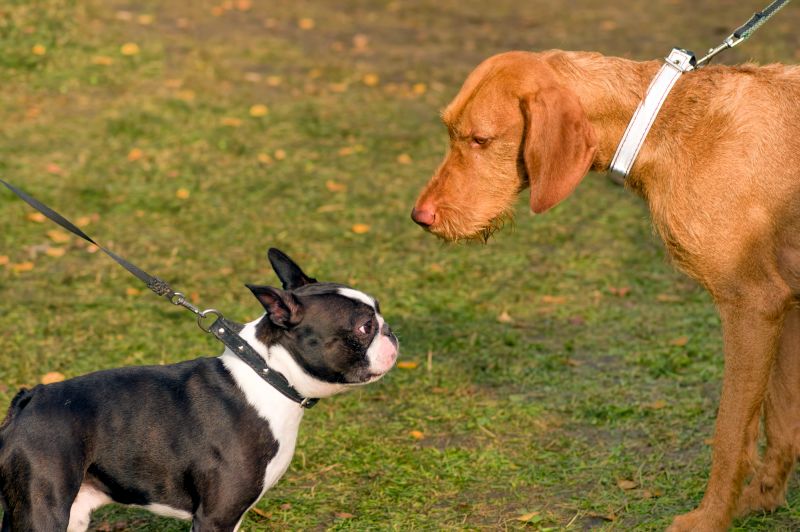
Still have some questions about on-leash dog greetings? We’ll try to help below by answering some of the most common.
Should you let dogs greet on-leash?
Generally, it’s best not to have strange dogs meet on-leash due to the risk of ruining leash skills, triggering fights, leash entanglement, or disease transfer. Try to facilitate friendships between your dog and other dogs in natural areas with plenty of space to move.
What is the proper way to greet a dog?
Dogs naturally greet in an arc, with plenty of pauses to assess the situation. This is best done with plenty of room to retreat and without direct eye contact. Approaching a dog head-on can be intimidating or overly exciting.
Should I let my dog say “Hi!” to other dogs on walks?
On-leash greetings during walks can undermine your leash skills, interrupt someone else’s walk, and put your dog at risk for tense or awkward situations. It’s best to try and find open areas for your dog to get to know a group of well-matched friends rather than trying to meet his social needs with short greetings on walks.
It’s important to meet our dogs’ social needs through free play in open areas. Dogs do best with well-known friends rather than lots of short greetings on leash, and leashes inhibit natural dog communication.
For all of these reasons, it’s best to avoid on-leash greetings. However, you and your dog have lots of other options to make friends and enjoy life.
Have you introduced your dog to other canines while leashed? How did it go? Do you wish other people would stop allowing their dog to approach yours while leashed?
Let us know about your experiences below!
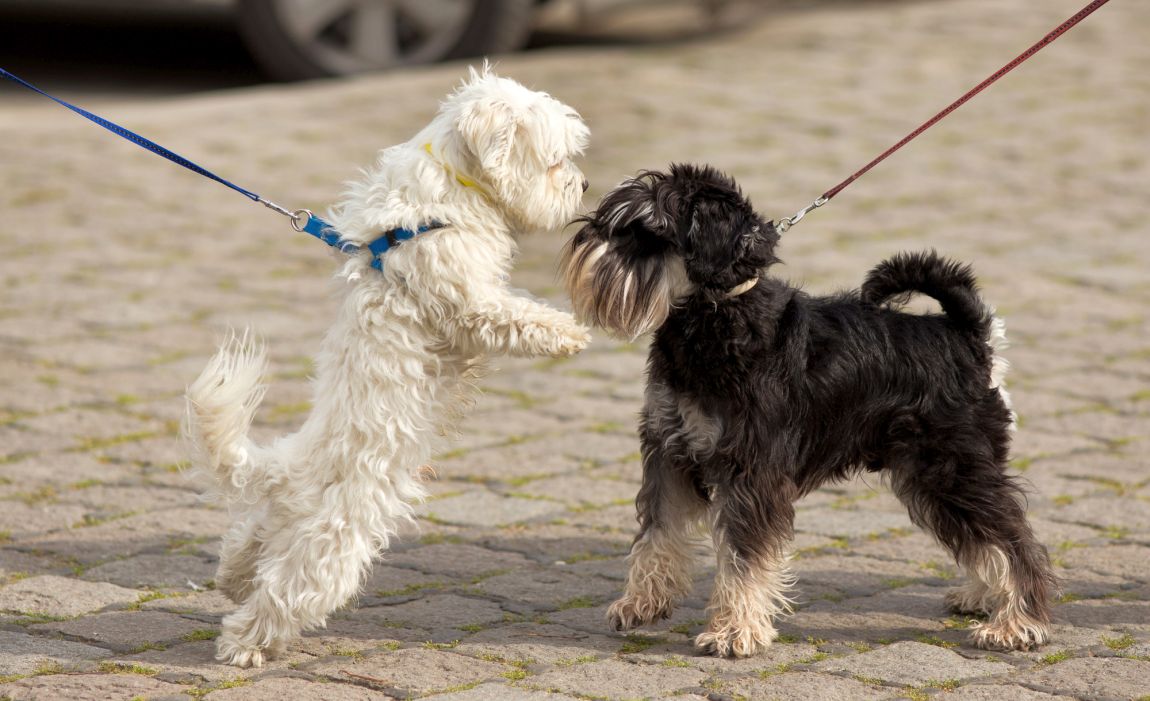

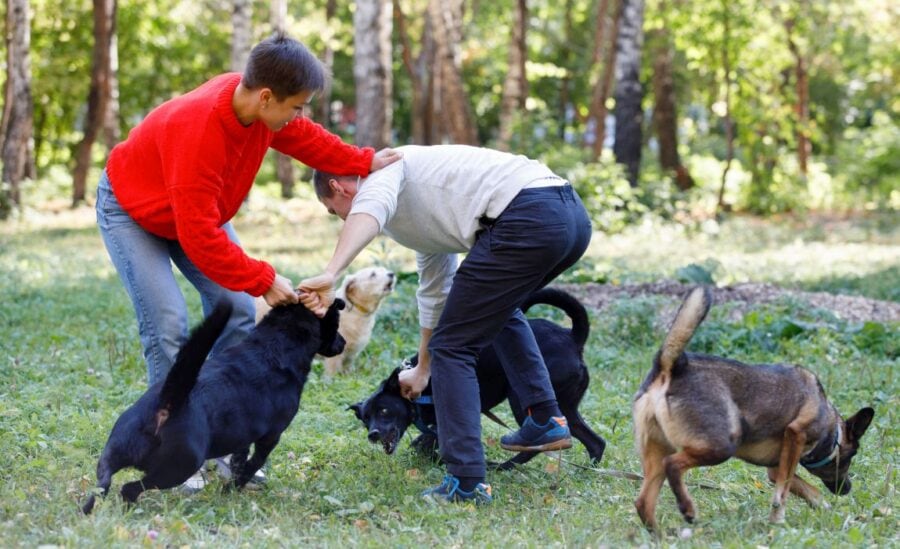


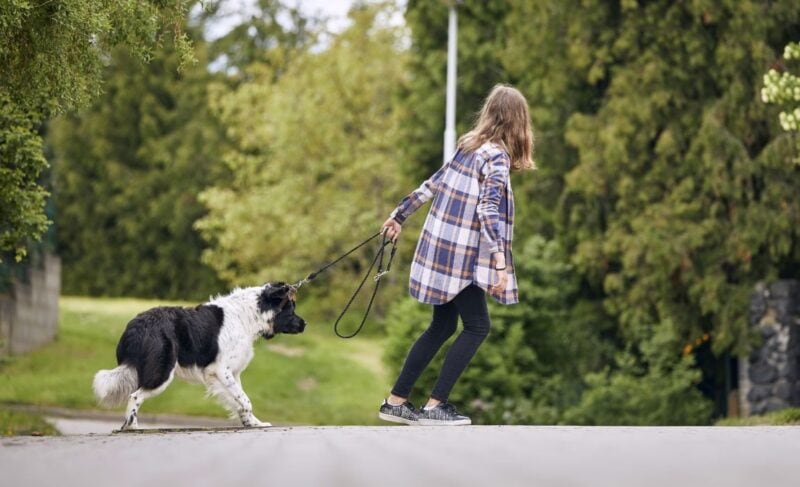
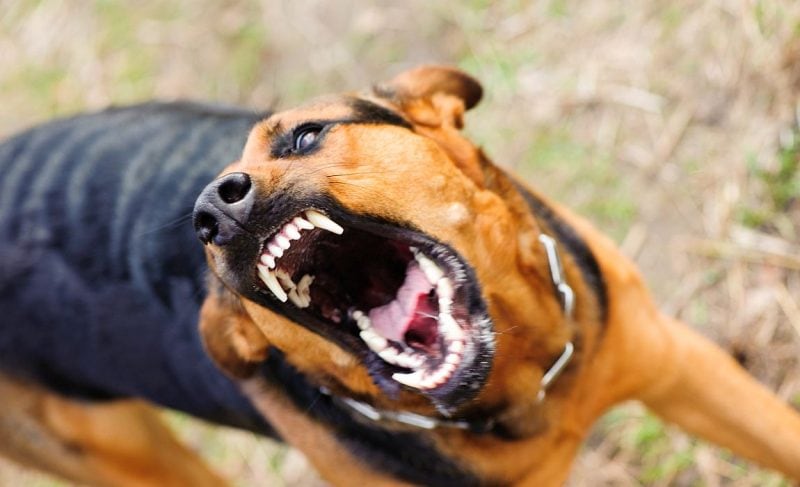
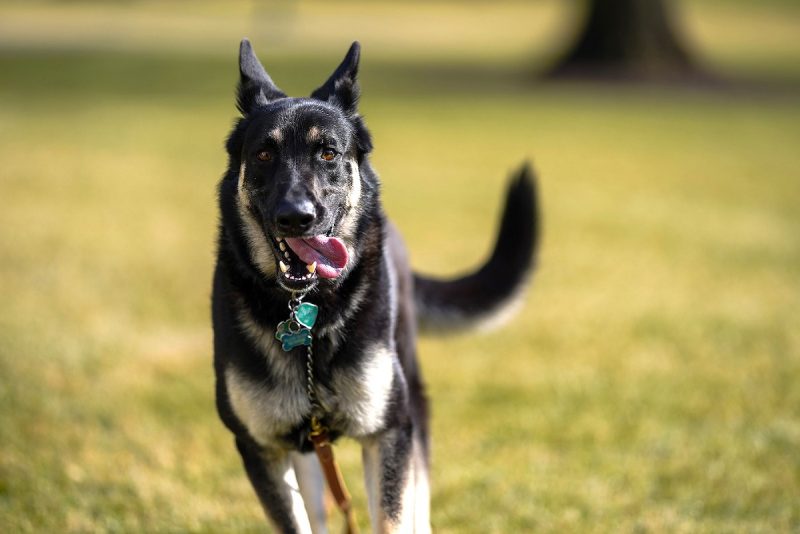
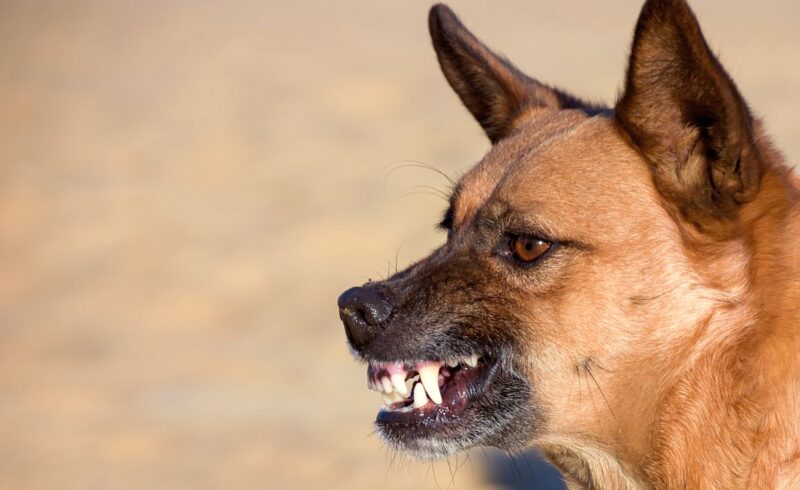
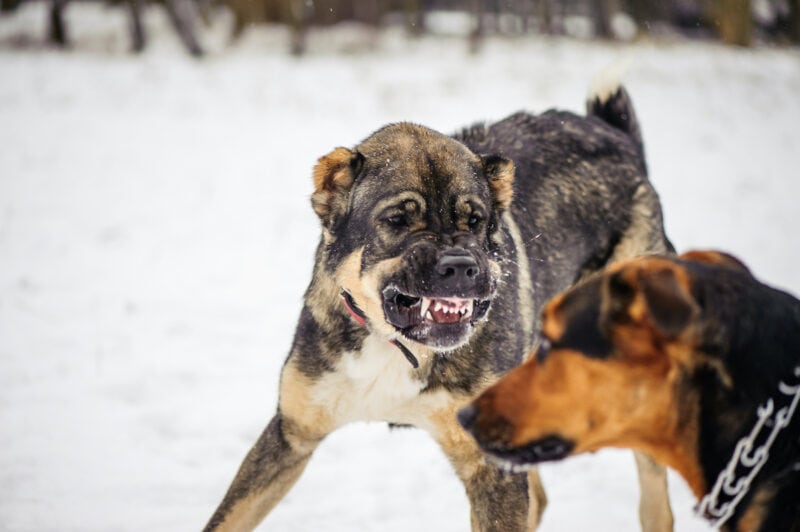
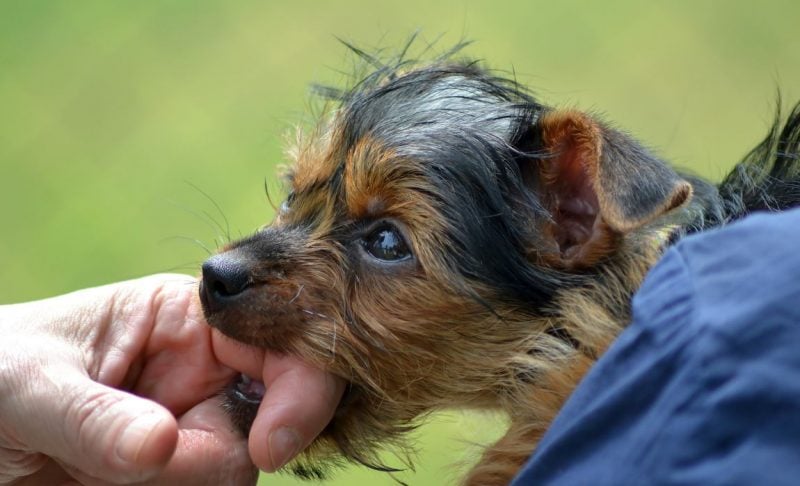
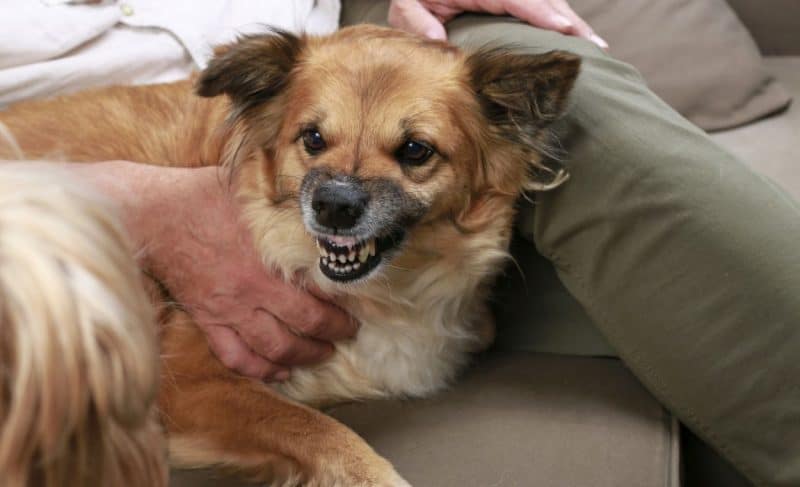

Leave a Comment